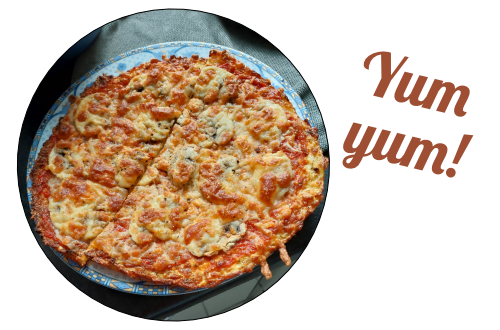Food
A while back I read "Fat Chance" by Dr Robert Lustig. More on what I learned below. It took a while for the message to sink in. A few months ago I finally decided to cut sugar out of my diet completely. To keep myself motivated, I read "Metabolical" by the same author. That book was scary. Again, see below.
I realised my body was sick. So after 6 days without sugar, I stopped eating processed foods and went Keto. I've been on Keto for over six months now and I am never going back. I feel fantastic: My mind is clear, I can focus for hours without problems, and I haven't had a single headache the entire time! I look fantastic: I am back to the clothes size I had when I was in my early twenties.
You know all those changes we attribute to age? Thinking slower, forgetting more, putting on weight around the middle... IT'S NOT AGE! It's insuline resistance. It's a metabolic desease. I wonder how many people would get the type of diabetes that's associated with age at all if we'd stop eating processed foods? Seriously, read what I've learned below! It saved my life.
Start date: 21.10.2022

I'm practicing:
- eating very low carb meals
- eating lots of veggies and salads
- new keto recipes, like a cauliflower pizza
- replacing flour with nut flours in non-keto recipes
- new keto recipes, like making my own ice cream, my own chocolate "bars" and chia chocolate pudding
- finding or inventing keto alternatives to dishes I used to love

I learned:
- Sugar isn’t food. Our bodies do not need it. It is an addictive substance
- Vitamin B1 helps you feel calm. A deficit can cause or worsen anxiety and stress. Nutritional yeast is a great source of B vitamins.
- We have 2 metabolisms in our body: the fat and glucose metabolisms.
- The fat metabolism when all is well: Our liver metabolises fat cells and creates ketones (= energy molecules) which are delivered to the rest of the body.
- The glucose metabolism when all is well: We eat carbs. They are digested into glucose which enters the blood stream. Insulin is released into the blood. It’s an enzyme that connects with cells in our bodies to make them open the gates so the glucose from the blood can enter the cell. Inside the cells mitochondria metabolise glucose and oxygen into energy and carbon dioxide. This is our default metabolism.
- The biome (= all the different bacteria) in our lower intestines, is vital for our health. We need to eat lots of fibre so the right kinds of bacteria can grow in our colon.
- There are two kinds of fibre: water-soluble and non-water-soluble (= the thick plant stuff your intestines cannot fully digest). Fruits and vegetables always have both together as long as they are not processed (e.g. mashed or turned into smoothies).
- Fructose (sugar in fruit but also in high-fructose corn syrup) is only metabolised in your liver. If you eat fructose as part of UNPROCESSED fruit and veggies, the two types of fibre combine in your colon to form a barrier that slows down the absorption of fructose, so that it only gets into your blood slowly so your liver can keep up.
- Here’s where things go bad: If (like me) you eat a lot of carbs (sugar but also other carbs, especially processed food), your blood is constantly filled with glucose. You have much more than your body needs and can handle. The mitochondria in your cells can’t cope. Your cells can’t cope. They close the gates and stop reacting to insulin. This is Insulin Resistance.
- Meanwhile all the glucose in your blood also goes into your liver. The liver metabolises as much as possible and turns it into liver fat and unhealthy fat around your other organs and your belly. If you drink fruit juice (even the natural 100% fruit juice) the fructose goes straight to your liver where it is turned into more liver fat. Pulp makes no difference because it’s too small, which is why even sugar-free smoothies are unhealthy. Your liver gets fattier and fattier. This is Non-Alcoholic Liver Disease.
- High carb processed foods also starve the right kind of bacteria and feed the wrong kind in your colon and your mouth. This leads to leaky gut, caries, gum deseases.
- These three, insulin resistance, non-alcoholic fatty liver disease, and harmful bacteria in the gut, are the trifecta of metabolic disease.
- Keto means eating extreme-low-carb and high-healthy-fat food. So lots of vegetables and a giant salad every day for the gut. Fatty foods, like nuts, cheese, olives, olive oil and avocados for energy.
- Here’s what happens on Keto: The body’s default metabolism is the glucose metabolism. If there’s very little glucose in your body (because you’re on an extreme-low-carb diet) your liver switches over to the fat metabolism. It uses the fat in the food. If you also add intermittent fasting, meaning you don’t eat for at least 14 hours in a row, your liver uses up fat storage to generate energy.
- Here comes the good news: The first storage it attacks is liver fat, then the other unhealthy fat stores.
- It takes about 6 weeks for your body to fully adapt to Ketosis because you need to build up the right enzymes.
- If you stay on Keto long enough insulin resistance is reversed!
- Exercise won't help you lose weight because your body adapts its energy use BUT it encourages your mitochondria to multiply and helps your body regenerate.
- If you eat too many carbs (more than 50g a day) you'll return to the glucose metabolism and it will take you up to three days to gets back into Ketosis -> no cheat days. Keto is not a diet. It's a life-style.
- Even the taste of sweetness from artificial sweeteners in your mouth releases insulin into your blood. I won't eat any sweets, not even Keto desserts, until I'm sure my insulin resistance has been reversed. And even then, sweets will be a rare treat.
